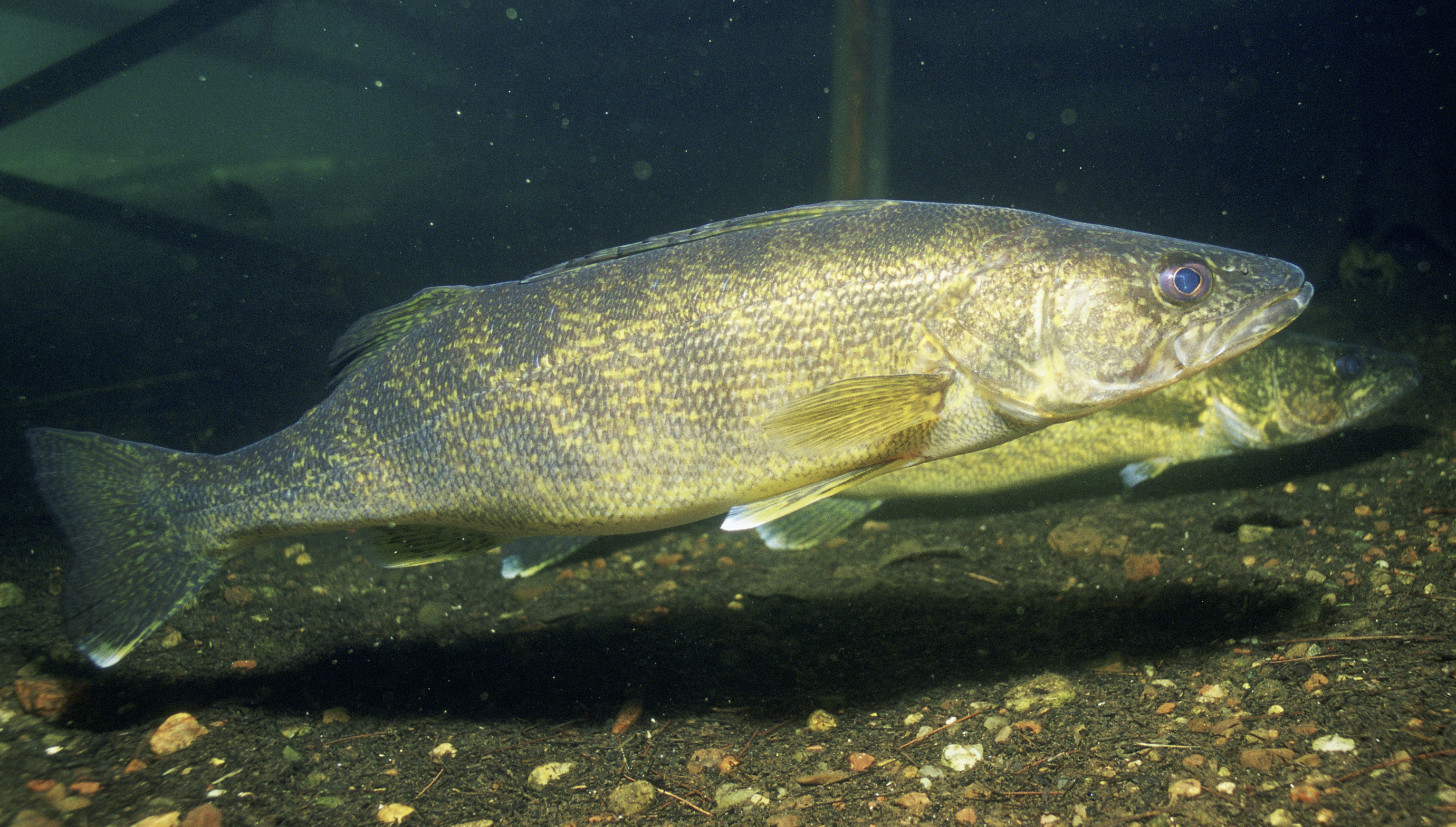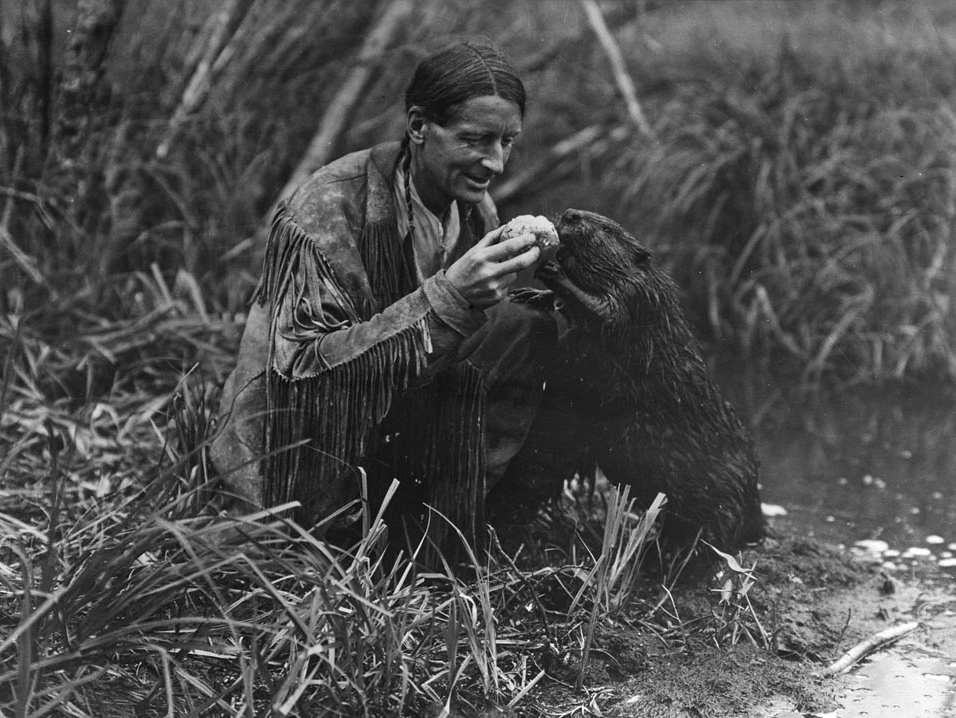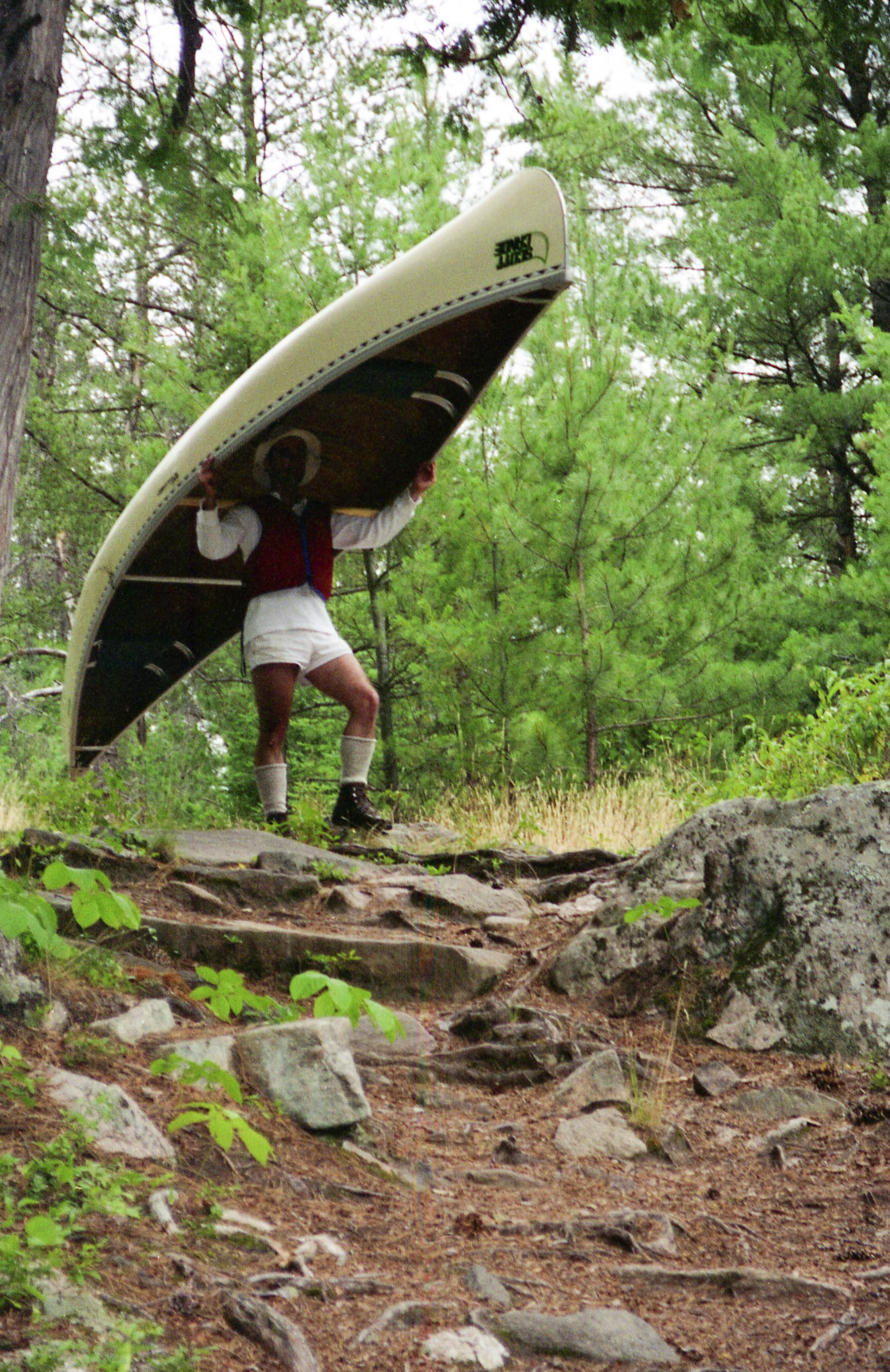|
Ajawaan Lake
Ajawaan Lake is a lake in the northern boreal forest portion of Prince Albert National Park in the Canadian province of Saskatchewan, from the north end of Kingsmere Lake via a wide portage trail. It is known mainly as the home of Grey Owl, famed naturalist, from 1932 to 1938. Access is via a trail from the Kingsmere River up the west side of Kingsmere Lake, or by canoe or small boat via the Kingsmere River, Kingsmere River rail push-cart portage and Kingsmere Lake. The lake has native northern pike and walleye fish, as well as resident beavers. The trail to Grey Owl's cabin is around the western edge of the lake. There are two cabins on the north shore, one at the water's edge where beavers had built a lodge partly inside and a second up the hill behind. The second cabin was built for Grey Owl's wife, Anahareo, who disliked sharing the cabin with beavers. The graves of Grey Owl, Anahereo, and their daughter Shirley Dawn are west of the upper cabin. There are interpretative ... [...More Info...] [...Related Items...] OR: [Wikipedia] [Google] [Baidu] |
Prince Albert National Park
Prince Albert National Park encompasses in central Saskatchewan, Canada and is about north of Saskatoon. Though declared a National parks of Canada, national park March 24, 1927, official opening ceremonies weren't performed by Prime Minister of Canada, Prime Minister William Lyon Mackenzie King until August 10, 1928. This park is open all year but the most visited period is from May to September. Although named for the city of Prince Albert, Saskatchewan, Prince Albert, the park's main entrance is actually north of that city via Saskatchewan Highway 2, Highways 2 and Saskatchewan Highway 263, 263, which enters the park at its southeast corner. Two additional secondary highways enter the park, Saskatchewan Highway 264, Highway 264, which branches off Highway 2 just east of the Waskesiu Lake, Saskatchewan, Waskesiu townsite, and Saskatchewan Highway 240, Highway 240, which enters the park from the south and links with 263 just outside the entry fee-collection gates. Prince Alb ... [...More Info...] [...Related Items...] OR: [Wikipedia] [Google] [Baidu] |
Canoe
A canoe is a lightweight, narrow watercraft, water vessel, typically pointed at both ends and open on top, propelled by one or more seated or kneeling paddlers facing the direction of travel and using paddles. In British English, the term ''canoe'' can also refer to a kayak, whereas canoes are then called Canadian (canoe), Canadian or open canoes to distinguish them from kayaks. However, for official competition purposes, the American distinction between a kayak and a canoe is almost always adopted. At the Olympics, both conventions are used: under the umbrella terms Canoe Slalom and Canoe Sprint, there are separate events for canoes and kayaks. Culture Canoes were developed in cultures all over the world, including some designed for use with sails or outriggers. Until the mid-19th century, the canoe was an important means of transport for exploration and trade, and in some places is still used as such, sometimes with the addition of an outboard motor. Where the canoe play ... [...More Info...] [...Related Items...] OR: [Wikipedia] [Google] [Baidu] |
List Of Lakes Of Saskatchewan ...
This is a list of lakes of Saskatchewan, a province of Canada. The largest and most notable lakes are listed at the start, followed by an alphabetical listing of other lakes of the province. Larger lake statistics "The total area of a lake includes the area of islands. Lakes lying across provincial boundaries are listed in the province with the greater lake area." A B C D E F G H I J K L M N O P Q R S T U V W Y Z See also *List of lakes of Canada * List of rivers of Saskatchewan * Geography of Saskatchewan *List of dams and reservoirs in Canada References {{Authority control * Lakes Saskatchewan Saskatchewan is a Provinces and territories of Canada, province in Western Canada. It is bordered on the west by Alberta, on the north by the Northwest Territories, on the east by Manitoba, to the northeast by Nunavut, and to the south by the ... [...More Info...] [...Related Items...] OR: [Wikipedia] [Google] [Baidu] |
Beaver Lodge
Beavers (genus ''Castor'') are large, semiaquatic rodents of the Northern Hemisphere. There are two existing species: the North American beaver (''Castor canadensis'') and the Eurasian beaver (''C. fiber''). Beavers are the second-largest living rodents, after capybaras, weighing up to . They have stout bodies with large heads, long chisel-like incisors, brown or gray fur, hand-like front feet, webbed back feet, and tails that are flat and scaly. The two species differ in skull and tail shape and fur color. Beavers can be found in a number of freshwater habitats, such as rivers, streams, lakes and ponds. They are herbivorous, consuming tree bark, aquatic plants, grasses and sedges. Beavers build dams and lodges using tree branches, vegetation, rocks and mud; they chew down trees for building material. Dams restrict water flow, forming ponds, and lodges (usually built in ponds) serve as shelters. Their infrastructure creates wetlands used by many other species, and because o ... [...More Info...] [...Related Items...] OR: [Wikipedia] [Google] [Baidu] |
Anahareo
Gertrude Bernard (June 18, 1906 – June 17, 1986), commonly known as Anahareo, was a Canadian writer, animal rights activist and conservationist of Algonquin and Mohawk ancestry. Throughout her life, she challenged cultural stereotypes of First Nations women and proved herself to be "an intrepid, resourceful, and self-reliant woman who could manage on her own in the wilderness and yet was no stranger to the customs and trappings of modern civilization". At a time when "conservation" stood for increasing the size of animal populations for the sake of hunting and trapping, she, along with Grey Owl, pioneered a new conceptthat animals have intrinsic rights and deserve to be treated with respect and compassion. In the later years of her life, she became an outspoken champion of animal rights. Early life (19061925) Gertrude Bernard was born on June 18, 1906, in Mattawa, Ontario, where she spent her childhood. Her mother, Mary Nash Ockiping, was Algonquin, while her father, Ma ... [...More Info...] [...Related Items...] OR: [Wikipedia] [Google] [Baidu] |
Beaver
Beavers (genus ''Castor'') are large, semiaquatic rodents of the Northern Hemisphere. There are two existing species: the North American beaver (''Castor canadensis'') and the Eurasian beaver (''C. fiber''). Beavers are the second-largest living rodents, after capybaras, weighing up to . They have stout bodies with large heads, long chisel-like incisors, brown or gray fur, hand-like front feet, webbed back feet, and tails that are flat and scaly. The two species differ in skull and tail shape and fur color. Beavers can be found in a number of freshwater habitats, such as rivers, streams, lakes and ponds. They are herbivorous, consuming tree bark, aquatic plants, grasses and sedges. Beavers build dams and lodges using tree branches, vegetation, rocks and mud; they chew down trees for building material. Dams restrict water flow, forming ponds, and lodges (usually built in ponds) serve as shelters. Their infrastructure creates wetlands used by many other species, a ... [...More Info...] [...Related Items...] OR: [Wikipedia] [Google] [Baidu] |
Walleye
The walleye (''Sander vitreus'', Synonym (taxonomy), synonym ''Stizostedion vitreum''), also called the walleyed pike, yellow pike, yellow pikeperch or yellow pickerel, is a freshwater perciform fish native to most of Canada and to the Northern United States. It is a North American close relative of the European zander, also known as the pikeperch. The walleye is sometimes called the yellow walleye to distinguish it from the blue walleye, which is a color morph that was once found in the southern Ontario and Quebec regions, but is now presumed extinct. However, recent genetic analysis of a preserved (frozen) 'blue walleye' sample suggests that the blue and yellow walleye were simply phenotypes within the same species and do not merit separate taxonomic classification. In parts of its range in English-speaking Canada, the walleye is known as a pickerel, though the fish is not related to the true Esox, pickerels, which are members of the family ''Esocidae''. It is also sometimes c ... [...More Info...] [...Related Items...] OR: [Wikipedia] [Google] [Baidu] |
Northern Pike
The northern pike (''Esox lucius'') is a species of carnivorous fish of the genus ''Esox'' (pikes). They are commonly found in brackish water, moderately salty and fresh waters of the Northern Hemisphere (''i.e.'' holarctic in distribution). They are known simply as a pike (Plural, : pike) in Great Britain, Ireland, most of Eastern Europe, Canada and the United States, U.S., although in the Midwestern United States, they may just be called a Northern. Pike can grow to a relatively large size. Their average length is about , with maximum recorded lengths of up to and maximum weights of . The International Game Fish Association, IGFA currently recognises a pike caught by Lothar Louis on Greffern Lake, Germany, on 16 October 1986, as the all-tackle world-record holding northern pike. Northern pike grow to larger sizes in Eurasia than in North America, and in coastal Eurasian regions than inland ones. Etymology The northern pike gets its common name from its resemblance to the ... [...More Info...] [...Related Items...] OR: [Wikipedia] [Google] [Baidu] |
Grey Owl
Archibald Stansfeld Belaney (September 18, 1888April 13, 1938), commonly known as Grey Owl, was an English-Canadian popular writer, public speaker and conservationist. Born an Englishman, in the latter years of his life he passed as half-Indian, claiming he was the son of a Scottish man and an Apache woman. With books, articles and public appearances promoting wilderness conservation, he achieved fame in the 1930s. Shortly after his death in 1938, his real identity as the Englishman Archie Belaney was exposed. He has been called one of the first pretendians. Moving to Canada as a young man, Belaney established himself as a woodsman and trapper, before rising to prominence as an author and lecturer. While working for the Dominion Parks Branch of Canada in the 1930s, Belaney was named the "caretaker of park animals", first at Riding Mountain National Park in Manitoba and then at Prince Albert National Park in Saskatchewan. His views on wilderness conservation, expressed in ... [...More Info...] [...Related Items...] OR: [Wikipedia] [Google] [Baidu] |
Churchill River (Hudson Bay)
The Churchill River () is a major river in Saskatchewan and Manitoba, Canada. From the head of the Churchill Lake it is long. It was named after John Churchill, 1st Duke of Marlborough and governor of the Hudson's Bay Company from 1685 to 1691. The Cree name for the river is ''Missinipi'', meaning "big waters". The Denesuline name for the river is ''des nëdhë́'', meaning "Great River". The river is located entirely within the Canadian Shield. The drainage basin includes a number of lakes in Central-East Alberta which flow into a series of lakes in Saskatchewan and Manitoba. The main tributary, Beaver River, joins at Lac Île-à-la-Crosse. Nistowiak Falls — the tallest falls in Saskatchewan — are on the Rapid River, which flows north out of Lac la Ronge into Nistowiak Lake on the Churchill just north of La Ronge. A large amount of flow of the Churchill River after the Manitoba — Saskatchewan border comes from the Reindeer River, which flows from Wollaston a ... [...More Info...] [...Related Items...] OR: [Wikipedia] [Google] [Baidu] |
Portage
Portage or portaging ( CA: ; ) is the practice of carrying water craft or cargo over land, either around an obstacle in a river, or between two bodies of water. A path where items are regularly carried between bodies of water is also called a ''portage.'' The term comes from French, where means "to carry", as in "portable". In Canada, the term "carrying-place" was sometimes used. Early French explorers in New France and French Louisiana encountered many rapids and cascades. The Native Americans carried their canoes over land to avoid river obstacles. Over time, important portages were sometimes provided with canals with locks, and even portage railways. Primitive portaging generally involves carrying the vessel and its contents across the portage in multiple trips. Small canoes can be portaged by carrying them inverted over one's shoulders and the center strut may be designed in the style of a yoke to facilitate this. Historically, voyageurs often employed tump lines on t ... [...More Info...] [...Related Items...] OR: [Wikipedia] [Google] [Baidu] |
Kingsmere Lake
Kingsmere Lake is a lake surrounded by boreal forest in the Canadian province of Saskatchewan. At in size and over deep, it is a large lake in the Waskesiu Upland of central Saskatchewan. Several creeks and rivers feed the lake from the surrounding hills and, at the southern end of the lake, the outlet — Kingsmere River — flows south into Waskesiu Lake. The lake is within the Churchill River drainage basin. Kingsmere Lake is entirely within Prince Albert National Park. It has seven campgrounds, access to Grey Owl's cabin on Ajawaan Lake, hiking trails, canoeing, boating, and fishing. Access to the lake is from a trail that begins at the end of Kingsmere Road and follows the Kingsmere River northward. Campgrounds, trails, and canoe routes There are seven backcountry campgrounds on Kingsmere Lake, four of which are on the Grey Owl Trail. The Grey Owl Trail is long and traverses the eastern shore of the lake from Kingsmere River to Grey Owl's cabin. One campground is ... [...More Info...] [...Related Items...] OR: [Wikipedia] [Google] [Baidu] |








